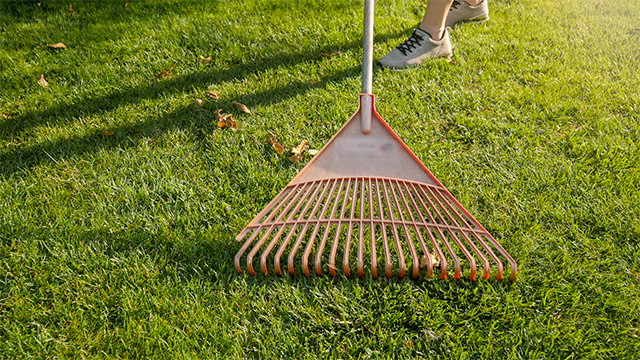Learning how to use a lawn leveling rake isn’t difficult but will bring you even more benefits than you may expect. Here you’ll learn now.
How to Use a Lawn Leveling Rake: Repeat These Steps
Do such things as visual appeal, safety, comfort, and simplicity matter to you? If so, you will be happy to know that leveling grass lawns can bring all these benefits to your very own lawn! You need to learn a bit to get them, though. That’s why we made this definitive guide on how to use a lawn leveling rake properly to achieve the best results. Follow the structure of the guide, and you will obtain all the knowledge required for completing this task without sacrificing too much time or quality of the outcomes.
How to level a yard with lawn:
|
Leveling Rake Guide
How do you know where to mown? What area has to be leveled and how to do it properly? Let’s cover the whole lawn leveling topic.
Why should you level your lawn?
Uneven lawns cause problems! They are much harder to maintain and may even be a health hazard. Bumpy lawns make it less convenient to mow and more dangerous to walk and run. Besides, lawns with sunken spots of compacted soil may accumulate standing water and cause various issues like mosquitoes, lawn damage, fungus, dirt, etc. And, of course, it’s just irritating to see a lawn that’s not neat enough. Proper leveling will save you nerves and money in the long run and may even raise the resale cost of your property.
How to use a lawn leveling rake
Before letting your shiny new lawn leveling rakes do the job, you need to prepare the area for leveling. Below are the steps to follow.
Step 0: Prepare lawn leveling equipment
The equipment you will need to do the job includes:
- Lawn leveling rake
- Wheelbarrow for soil
- Flat-head shovel
Step 1: Mow
First of all, you need to mow the lawn to around 2-3” to have perfect visibility of the ground level.
Step 2: Remove thatch
If there’s a lot of thatch covering the lawn, you need to rake the lawn thoroughly to remove it.
Step 3: Apply top-dressing
The best mixture for leveling your lawn includes topsoil, sand, and compost. You need to lay it over the grass. Focus on lower spots the most to level them for sure. If you see areas that are too deep, you need to dig them up to remove the grass and add enough soil to return them to the right level.
Step 4: Rake
Once all the low spots are filled with the leveling mixture, you need to use your leveling rake to spread the soil evenly and avoid any bumps and pits.
Step 5: Reseed
Once the leveling is done, you need to reseed all the areas where the grass was dug up or covered with soil because it’s not likely to regrow by itself.
FAQ
Don’t hurry to leave this page as there are several more important things to learn.
What is a level rake for?
Level rake is a tool designed for combing through fine turn areas to spread and grade them. The back and forth movement of the tools lets you achieve a perfectly even surface.
How do you level uneven ground?
This goes into the following main steps:
- mow the lawn to the right length;
- remove thatch if you see it;
- spread top dressing with leveling rake to level sunken spots;
- reseed the bare spots to cover them with fresh grass.
Can a sloped yard be leveled?
Fortunately for all homeowners who have that unfunctional sloped yards, they can be leveled. However, you will need much more time and effort than if you only had to even a bumpy lawn.
Time to Level!
As you can see now, leveling a bumpy lawn can be quite a satisfying work to do in your yard! All you need is the right tool combined with the proper technique and a pinch of perfectionism. Leveling rarely takes a lot of time and allows you to achieve a perfectly flat lawn with thriving grass in less than a week (including the grass growing back after reseeding). Do you have anything to add to this guide or to ask us about? You are welcome to add value and ask any related questions in the comments below. Good luck!

